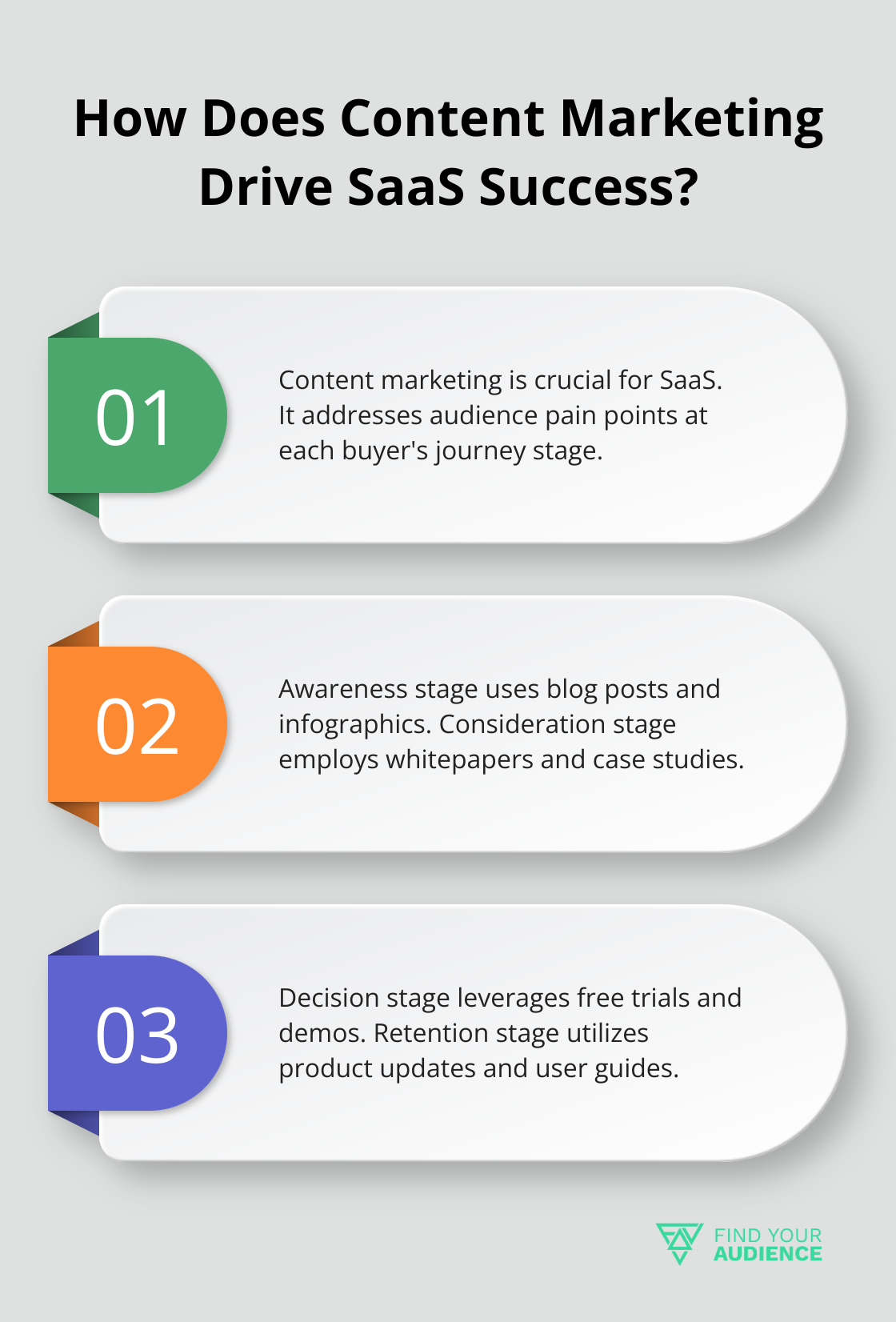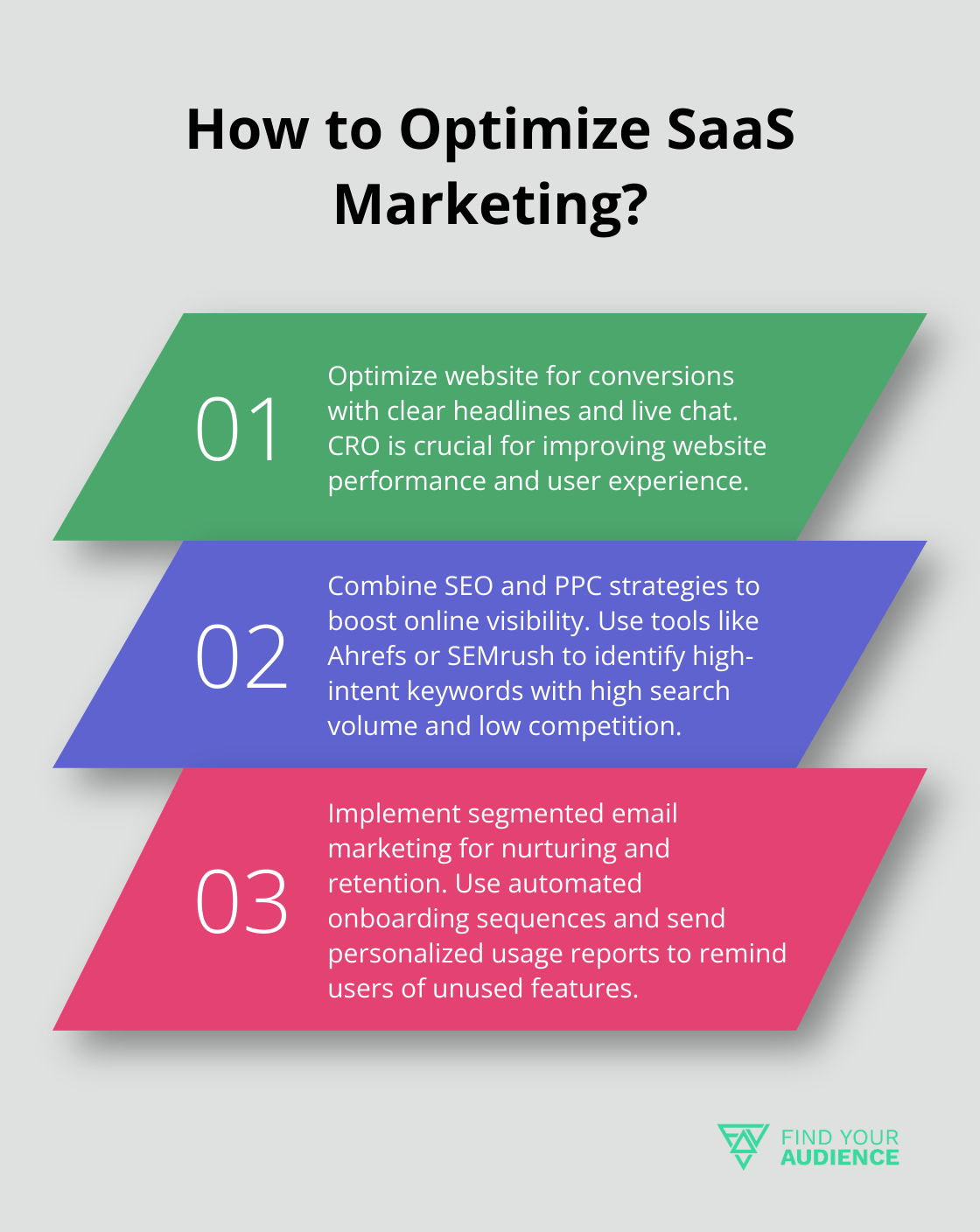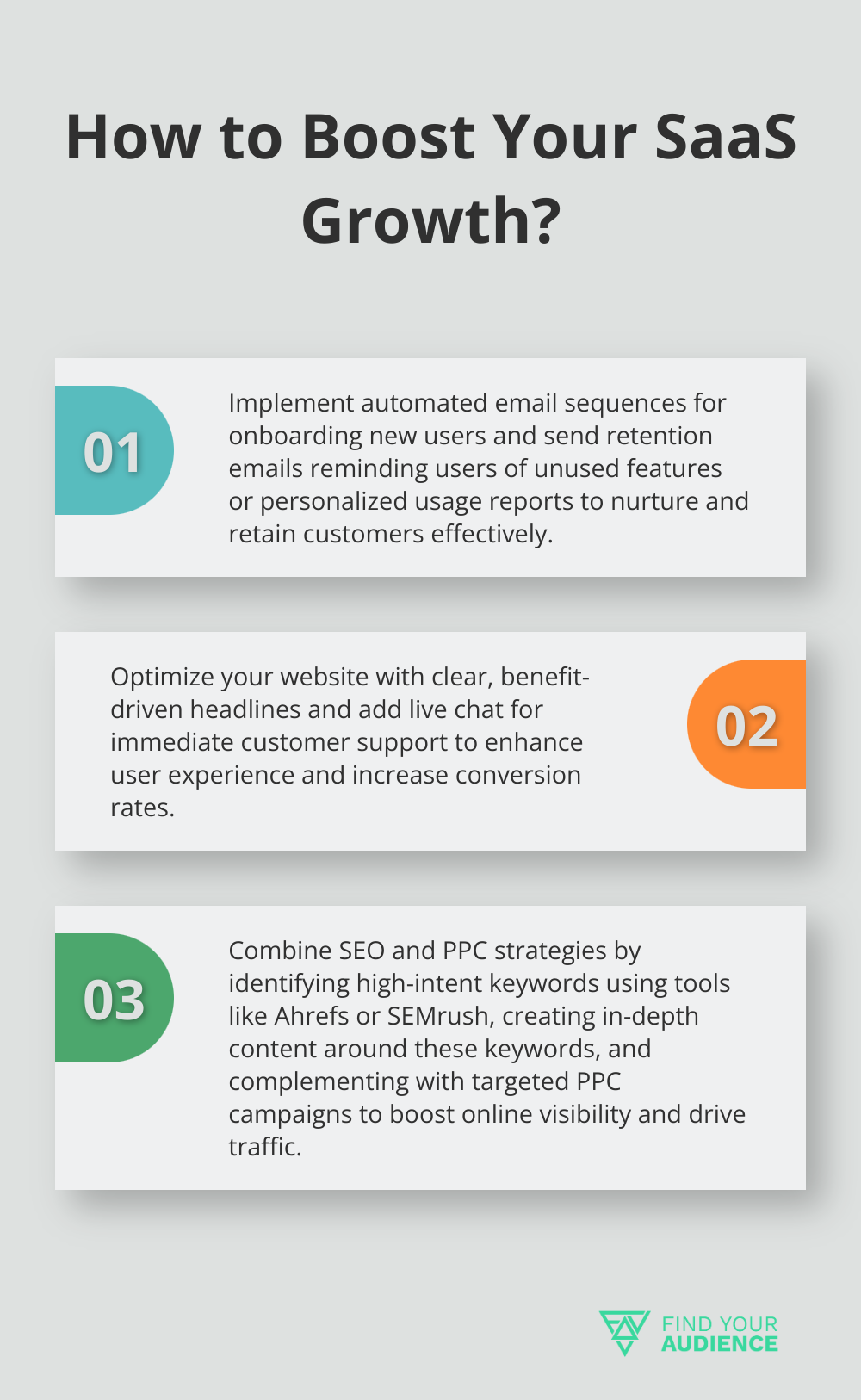How to Do SaaS Marketing: A Step-by-Step Guide
SaaS marketing can be a complex puzzle for many businesses. At Find Your Audience, we’ve seen firsthand how the right strategies can transform a SaaS company’s growth trajectory.
In this guide, we’ll break down how to do SaaS marketing effectively, step by step. From understanding the fundamentals to implementing proven tactics, we’ll equip you with the knowledge to elevate your SaaS marketing game.
What Makes SaaS Marketing Unique?
SaaS marketing differs significantly from traditional product marketing due to its subscription-based model and digital nature. These unique characteristics shape marketing strategies for SaaS companies in several ways.
The Subscription Challenge
The primary challenge in SaaS marketing is the need for continuous value demonstration. Unlike one-time purchases, SaaS products require ongoing customer engagement to prevent churn. Marketing efforts don’t stop at acquisition; they must focus heavily on retention and upselling.
A study by Bain & Company found that increasing customer retention rates by 5% increases profits by 25% to 95%. This statistic underscores the importance of retention-focused marketing in the SaaS world.
Metrics That Matter
To effectively market SaaS products, companies must track the right metrics. While traditional marketing often focuses on lead generation and conversion rates, SaaS marketing demands a more nuanced approach.

Key metrics for SaaS marketing success include:
- Customer Acquisition Cost (CAC): This measures the cost to acquire a new customer. A lower CAC indicates more efficient marketing and sales processes.
- Customer Lifetime Value (CLV): This predicts the total revenue a business can expect from a single customer account (throughout the business relationship). A higher CLV justifies higher acquisition costs and indicates strong retention.
- Churn Rate: This measures the percentage of customers who cancel their subscriptions within a given time period. A low churn rate is essential for sustainable growth.
- Monthly Recurring Revenue (MRR): This tracks predictable and recurring revenue, which is the lifeblood of SaaS businesses.
The SaaS Customer Journey
Understanding the SaaS customer journey is vital for effective marketing. Unlike traditional products, the SaaS customer journey doesn’t end at purchase. It typically includes stages like:
- Awareness: Potential customers become aware of your SaaS solution.
- Consideration: They evaluate your product against alternatives.
- Purchase: They decide to subscribe to your service.
- Adoption: Customers start using your product and integrate it into their workflows.
- Retention: They continue to use and find value in your product.
- Expansion: Customers upgrade or purchase additional features.
- Advocacy: Satisfied customers recommend your product to others.
Each stage requires tailored marketing strategies. For instance, content marketing and SEO might prove more effective for awareness, while email campaigns and in-app messaging could yield better results for retention and expansion.
Mapping your customer journey helps you identify what’s drawing inbound customers to your site, giving you insight into how to increase and leverage inbound traffic. This highlights the importance of understanding and optimizing each stage of the customer journey.
The unique aspects of SaaS marketing require a shift in mindset from traditional product marketing. The next chapter will explore how to develop a comprehensive SaaS marketing strategy that addresses these unique challenges and leverages the opportunities they present.
How to Build a Winning SaaS Marketing Strategy
A successful SaaS marketing strategy requires a deep understanding of your target audience, clear goals, and the right mix of marketing channels. Here’s how you can create a winning SaaS marketing strategy:
Know Your Audience Inside Out
The first step in developing a SaaS marketing strategy is to identify and understand your target audience. This goes beyond basic demographics. You need to create detailed buyer personas that include:
- Job roles and responsibilities
- Pain points and challenges
- Goals and objectives
- Preferred communication channels
- Decision-making processes

To gather this information, conduct surveys, analyze your current customer base, and engage in social listening. Tools like Hubspot’s Make My Persona can help you organize this information effectively.
Set SMART Marketing Goals
Your SaaS marketing goals should be Specific, Measurable, Achievable, Relevant, and Time-bound (SMART). Some key goals to consider:
- Increase Monthly Recurring Revenue (MRR) by X% in Y months
- Reduce Customer Acquisition Cost (CAC) by X% in Y months
- Improve customer retention rate to X% within Y months
- Increase product adoption rate to X% within Y months
These goals should align with your overall business objectives and undergo regular review and adjustment based on performance.
Select the Right Marketing Channels
Not all marketing channels are created equal for SaaS companies. Based on your target audience and goals, you might focus on:
- Content Marketing: Blog posts, whitepapers, and case studies to educate and nurture leads.
- SEO: To improve organic visibility for key product-related terms.
- Paid Search: For immediate visibility and lead generation.
- Email Marketing: For lead nurturing and customer retention.
- Social Media: To build brand awareness and engage with your audience.
- Webinars and Virtual Events: To showcase your product and expertise.
A superior experience correlates to increased customer loyalty and brand advocacy, increasing retention and lifetime value.
Create a Content Marketing Plan
Content marketing for B2B SaaS plays a central role in SaaS marketing. Your content should address the pain points and questions of your target audience at each stage of the buyer’s journey. Here’s a basic framework:
- Awareness Stage: Blog posts, infographics, and social media content
- Consideration Stage: Whitepapers, case studies, and product comparison guides
- Decision Stage: Free trials, demos, and customer testimonials
- Retention Stage: Product updates, user guides, and customer success stories
Try to repurpose your content across different formats and channels to maximize its reach and impact.
Measure and Optimize
Your SaaS marketing strategy should be data-driven. Use tools like Google Analytics, Mixpanel, or Amplitude to track key metrics such as:
- Website traffic and engagement
- Conversion rates at different funnel stages
- Customer Acquisition Cost (CAC)
- Customer Lifetime Value (CLV)
- Churn rate
Regular analysis of these metrics will provide insights to refine your strategy. A/B testing can be particularly effective for optimizing your website, email campaigns, and ad copy.
The development of a comprehensive SaaS marketing strategy takes time and effort, but it forms the foundation for long-term success. The next chapter will explore how to implement effective SaaS marketing tactics that align with your overall strategy and drive results.
Implementing Effective SaaS Marketing Tactics
Optimize Your Website for Conversions
Your website serves as your digital storefront. Make it count. Conversion Rate Optimization (CRO) is essential for improving your SaaS website’s performance. Focus on clear, benefit-driven headlines that communicate your product’s value proposition effectively.

Add live chat for immediate customer support. This feature can significantly enhance user experience and increase the likelihood of conversions.
Leverage SEO and PPC for Growth
Combining SEO and PPC strategies can boost your online visibility and drive more traffic to your website. Start by identifying high-intent keywords. Tools like Ahrefs or SEMrush help you find keywords with high search volume and low competition.
Create in-depth content around these keywords. Complement your SEO efforts with targeted PPC campaigns. Google Ads allows you to bid on keywords your competitors rank for organically, giving you immediate visibility.
Use Email Marketing to Nurture and Retain Customers
Email remains one of the most effective channels for SaaS marketing. Segment your email list based on user behavior and preferences.
Implement automated email sequences for onboarding new users. Send retention emails. Remind users of unused features or send personalized usage reports.
Harness Social Media to Build Community and Trust
Social media isn’t exclusive to B2C. LinkedIn proves particularly effective for B2B SaaS. Share thought leadership content, engage in industry discussions, and showcase customer success stories.
User-generated content can drive engagement. Encourage customers to share their experiences with your product.
Use social media for customer support. Responding to customer service questions or complaints on social media can positively impact brand perception.
These tactics don’t apply universally. Test, measure, and refine based on your specific audience and goals. Provide value at every touchpoint of the customer journey consistently.
Final Thoughts
SaaS marketing requires a strategic approach and continuous adaptation. Companies must focus on delivering value at every stage of the customer journey to excel in this dynamic field. This involves creating compelling content, optimizing websites, and building trust through various channels. Regular analysis of key metrics and willingness to pivot based on data-driven insights prove essential for long-term success in the ever-evolving SaaS landscape.

Successful SaaS marketing combines persistence, creativity, and data-driven decision-making. Experimentation with new tactics or channels (while keeping core objectives and target audience in mind) often leads to breakthroughs. Consistent value provision and focus on customer success position companies to thrive in the competitive SaaS market. Understanding how to do SaaS marketing effectively can significantly impact a company’s growth trajectory.
Find Your Audience offers tailored solutions to help businesses navigate the SaaS marketing landscape. Our scalable marketing team provides expertise and resources to implement winning strategies, drive pipeline growth, and maximize marketing ROI. We assist in enhancing existing efforts or building comprehensive marketing functions from the ground up. Contact us to learn how we can help you engage your ideal audience in the SaaS space.

